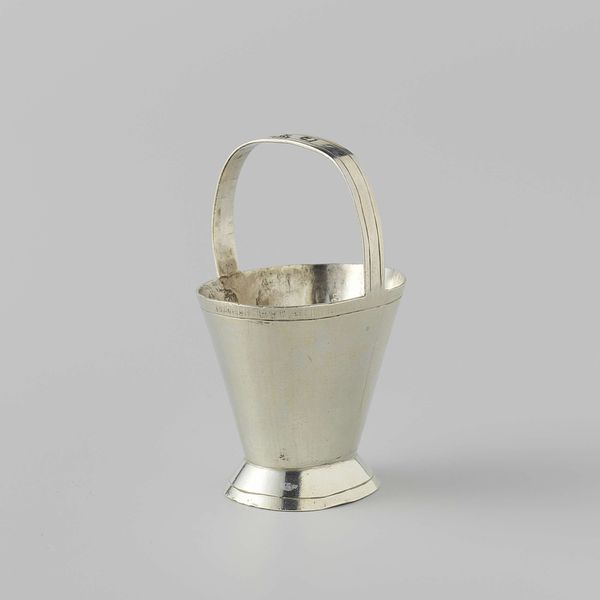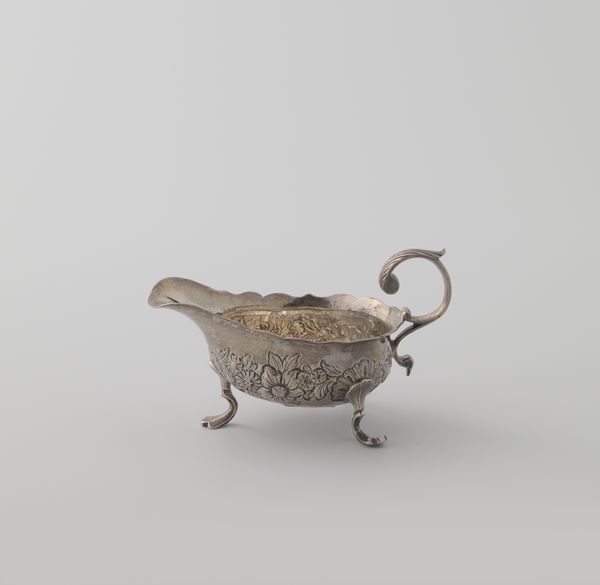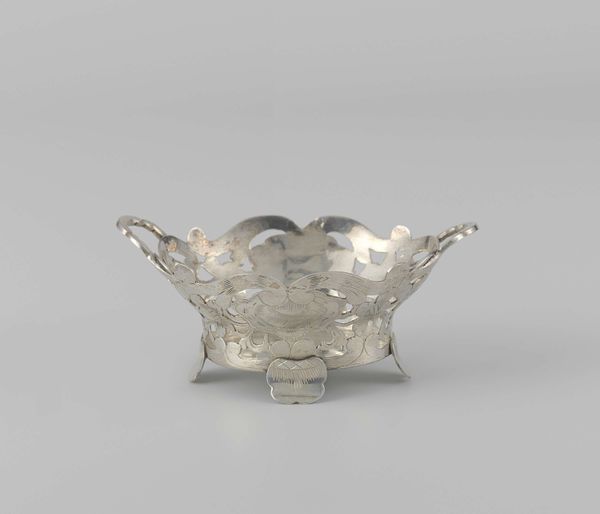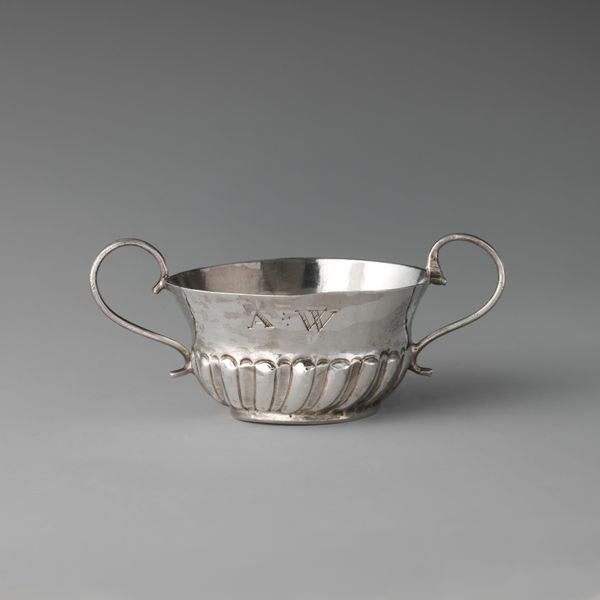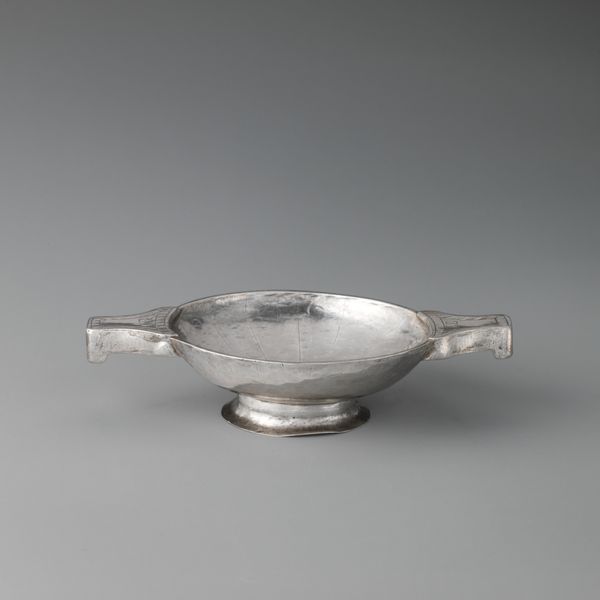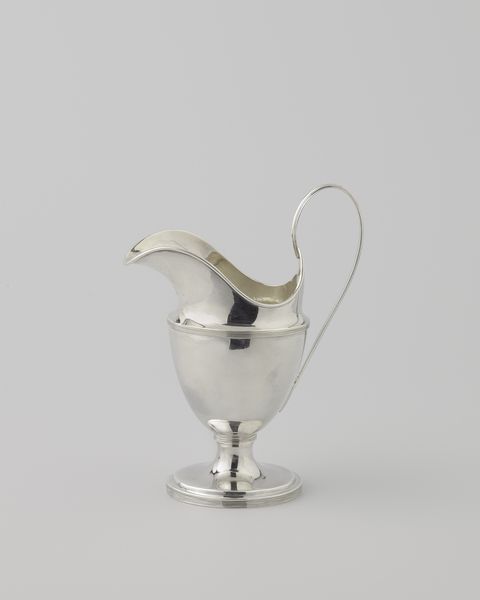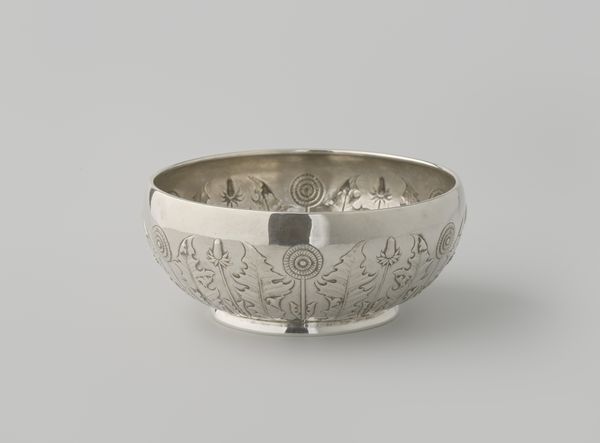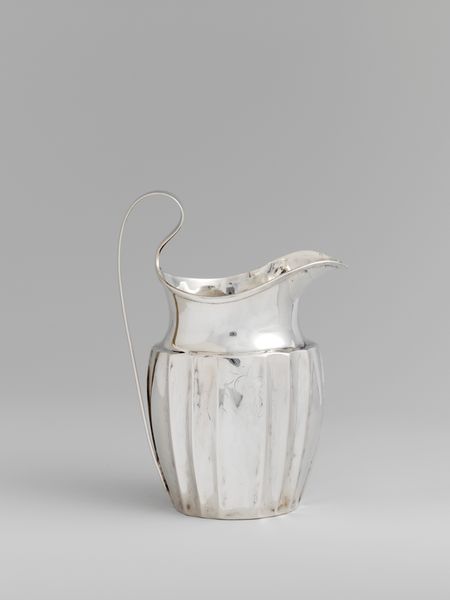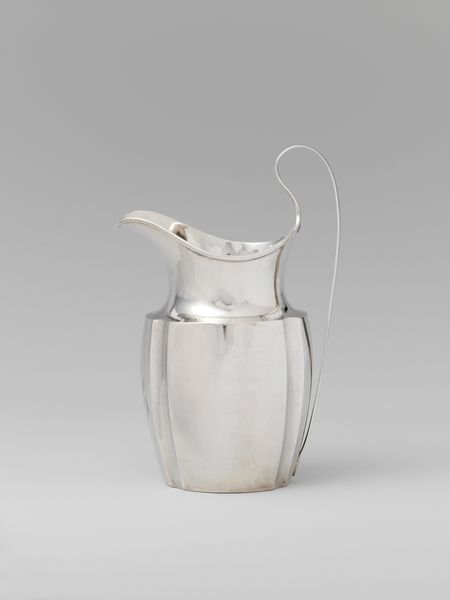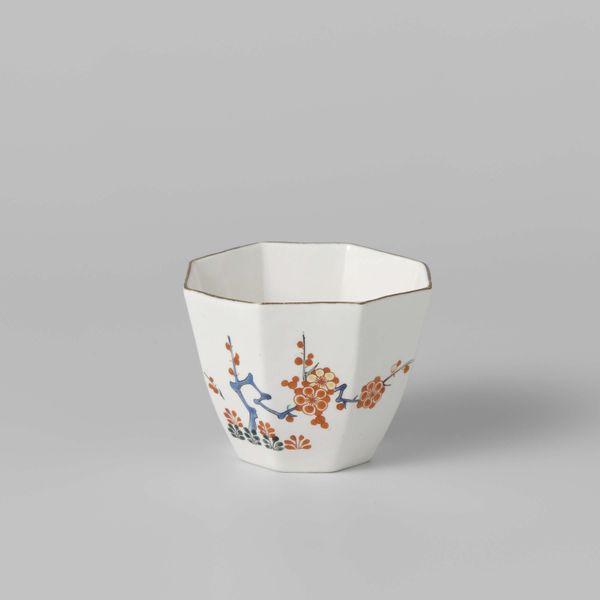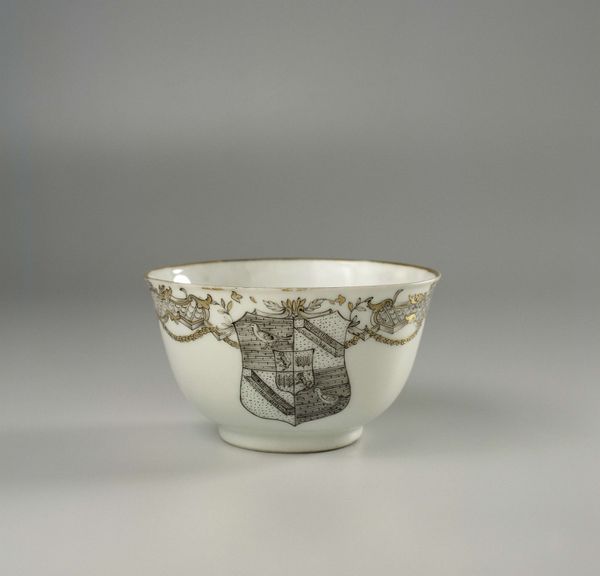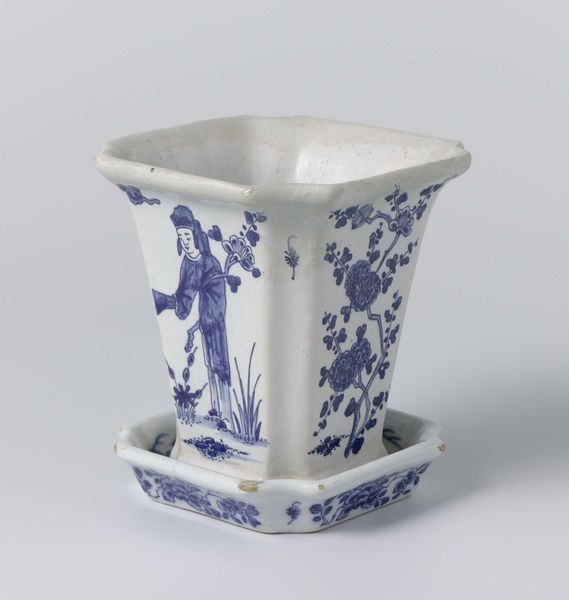
silver, metal, sculpture
#
silver
#
metal
#
sculpture
#
decorative-art
Dimensions: height 5.1 cm, width 3.8 cm, weight 12.22 gr
Copyright: Rijks Museum: Open Domain
Curator: Here we have "Marktemmer," a piece crafted in silver and other metals, dating back to between 1776 and 1811. Editor: It strikes me as almost comically precious. That petite size and gleaming silver surface are giving real dainty fairytale vibes. I’m immediately curious what purpose something like this served in its day. Curator: Well, these so-called marktemmers were effectively money baskets, designed to hold and display coins. Their function speaks to social structures that prominently featured displays of wealth. Think of how easily something like this could underscore power imbalances during economic exchanges. Editor: Oh, fascinating! It’s easy to miss the implied societal commentary when initially viewing a “decorative art” piece, isn’t it? The choice of material here, gleaming silver, must have had real signifying power, especially juxtaposed against the relative poverty of others. Curator: Absolutely. It speaks volumes about status, prosperity, and control of resources. The fact that its small and hand-held made the wealth portable. One can carry their power literally and figuratively. Editor: The engraved leaf detail seems to soften its opulence. Yet that small gesture reads now more as a means of making the wealthy elite feel better, softening edges where power is on display, no? The very term 'decorative arts' can blind us to the very complex intersectional relations playing out here around status and function. Curator: I would agree. These objects functioned as political tools; in understanding its place in historical power dynamics, we also realize we are looking at history that echoes still into current conditions. Editor: Indeed. So, in viewing something like "Marktemmer," we’re not simply observing a quaint historical object but, actually, a potent symbol of economic disparity made visible. Curator: Precisely. It's a reminder that art, even in its most seemingly innocuous forms, can reflect—and sometimes perpetuate—inequities. Editor: Leaving us with a question for how to make visible those inequitable histories through pieces that too often get seen as curiosities.
Comments
No comments
Be the first to comment and join the conversation on the ultimate creative platform.
